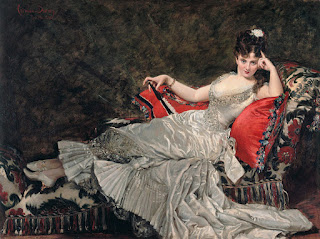Drypoint Printing The Pythia
Drypoint print on paper 5 x 8 in
 Drypoint is an intaglio printing method wherein an image is incised into a hard plate, usually copper (or in this case, plexiglass).
Drypoint is an intaglio printing method wherein an image is incised into a hard plate, usually copper (or in this case, plexiglass).  The image is scratched into the surface using a sharp stylus. The plate is then covered with ink and wiped clean, with the incised lines retaining ink in their grooves.
The image is scratched into the surface using a sharp stylus. The plate is then covered with ink and wiped clean, with the incised lines retaining ink in their grooves.
This plate is then run through a printing press with a dampened sheet of paper on top. The paper is dampened so that it is pliable enough to be forced into the grooves of the plate by the pressure of the press.
Unlike other intaglio methods, like etching and engraving, the incised lines of the drypoint plate are shallow and depend for inking on the sharp raised burr along their edges. As the plate is used the burr deteriorates. As such, only a few prints can be pulled from a drypoint plate.
 However, even a used plate retains a ghost of its incised image and this can form the basis for further development.
However, even a used plate retains a ghost of its incised image and this can form the basis for further development.
New lines are scratched into the plate over the old, and the combination of the old dull lines with the fresh dark lines produces a richer tonal range. Each stage of development in the plate is known as a state, and each state represents a separate edition of the print.

The plate continues to be workable in this way so long as the artist can continue to scratch the surface. Too many incisions across a given area can lead to pitting and cracking.
This print depicts a woman experiencing a visionary state, in which she is mentally abstracted from her physical environment. It is named for The Pythia, the priestess of the Temple of Apollo at Delphi. The Pythia was believed to be a medium for divine prophecy, delivered to her in ecstatic trance.
This print is available in each of its first two states. 4 prints are available of each, $45 a piece.






Comments
Post a Comment